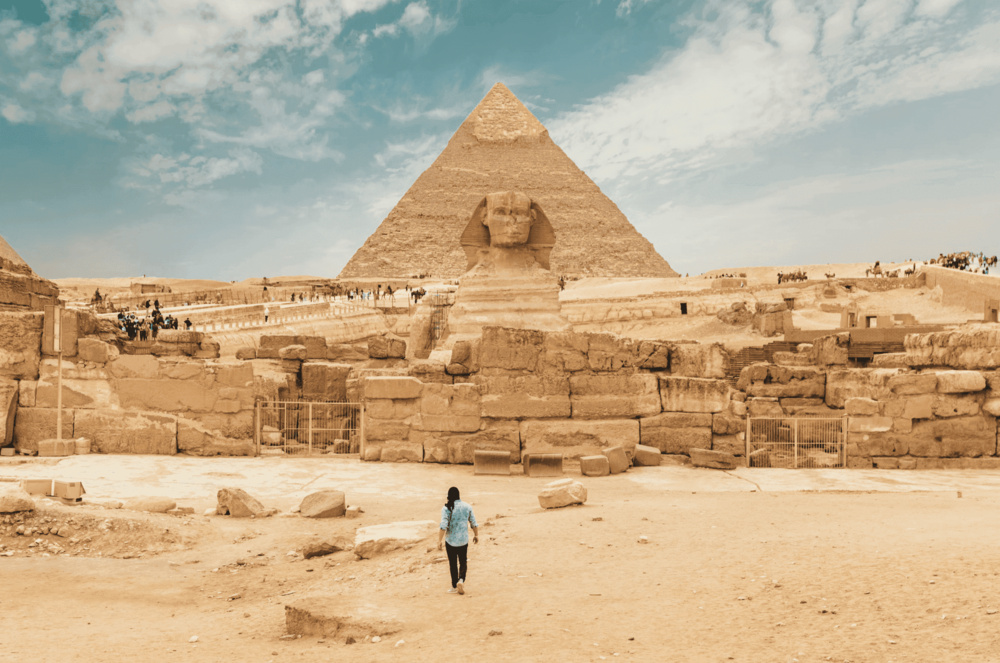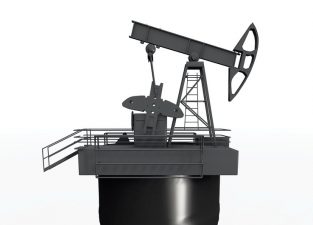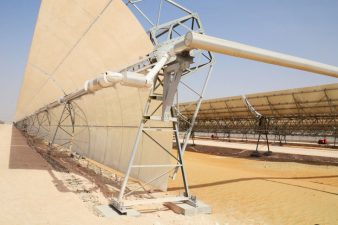
The best way to deal with carbon is not to release it in the first place. Carbon capture is not the ultimate solution.
Sometime in the 1970s when our family outings were usually to places like Yogi Bear Jellystone park or the local drive-in movie, my father drove us to a coal-fired power plant. The local electric company had just installed smokestack scrubbers to comply with the Clean Air Act. The transformation from sooty grey smoke to puffy white clouds of steam seemed like a miracle.
Nixon-era greenwashing
Dad taught Science so he was able to explain how the scrubbers used electricity to attract ash and soot. It was similar to the way a charged balloon attracted our hair or clinged to the wall. These scrubbers were amazing but they were not designed to reduce the lung-rotting sulphur dioxide (SO2 – sox for short), nitrogen oxides (NOx – nox for short) or ozone (O3). They did little to reduce the levels of brain-rotting mercury or lead and did nothing to slow the release of carbon dioxide (CO2) into our atmosphere.
Twenty-five years later the company proposed three additional “clean-coal” power plants on the same site to take advantage of the grandfather clause of environmental laws written when the original plants were constructed in the 1950s. The proposal’s Environmental Impact Statement (EIS) said that new technologies did capture more pollution. Per megawatt-hour, each new plant would produce less SO2, NOx and O3 than the older ones. This factoid was repeated on advertising along with the promise for jobs. But the devil was in the details. In sum total along with the existing plants, regional air quality would decline and barely meet Clean Air Act standards only if the smokestacks were built higher than the Federal Aviation Association (FAA) allowed.
I learned that photovoltaic solar energy was considered to be too expensive and that new nuclear power plants were disqualified until someone figured out a safe way to store the waste.
The new “Clean-coal” power plants were expensive to build so they would have to stay online for at least 50 years in order to be cost-effective. Gas turbine power plants produce less CO2 per megawatt and are cheaper to build but they are more expensive to operate. Computer models recommended thousands of megawatts of offshore wind farms as the most cost-effective energy source. But these models were ignored.
Jobs were the ultimate trump card in the power plant debate but environmentalists brought up the probable negative impact of mercury and thermal pollution on the state’s fishing industry and the impact on traffic from the freight trains that would bring more than 6000 tons of coal every day to generate approximately 1100 Megawatts of electricity and release 12,000 tons of Carbon Dioxide into our atmosphere.
Despite more than a century of science showing the impact of CO2 on climate and the fact that a CO2 concentration of 4% is fatal, this invisible gas is not considered a pollutant. When anyone brought up the topic of CO2, the word “sequestering” was used as if it was a magic incantation that would cure our carbon-based troubles.
What is Sequestering?
The dictionary gives:
Se·ques·ter verb
- isolate or hide away.
“Tiberius was sequestered on an island”
In the context of carbon dioxide, sequestering refers to any method which can lock this greenhouse gas safely away from where it can harm us and our environment.
Since the O2 component of CO2 is not harmful, the simplest way to sequester CO2 would be to separate the Oxygen from the Carbon, reversing the coal-burning reaction:
C + O2 → CO2 + energy
to:
CO2 + energy → C + O2
Unfortunately unburning coal is almost as difficult as unbaking a cake. A wise college professor named Merlin once taught us the three laws of physics as:
- You can’t win
- You can’t break even
- You shouldn’t even try.
Even if coal was pure carbon and air was pure oxygen, the coal unburning reaction would take more energy than we got from burning the coal. But let’s be optimistic. Maybe there is a way to sneak around that third law of physics, a trick to hide the carbon from mother nature.
Nature
Plants use chlorophyll and energy from sunlight to absorb carbon dioxide and release oxygen. They already know how to sequester carbon. Over time these plants will eventually become coal which is mostly carbon. So it is possible to reverse that chemical reaction! Climate impact’s nature based solutions use plants as part of the carbon offsets which help companies move towards a carbon-neutral balance. According to an article published in the journal Nature, fast growing trees such as Eucalyptus and Acacia can absorb up to 5 tons of carbon per hectare per year.
Going back to my neighbourhood coal power plant, in order to store the 12,000 tons of carbon dioxide this 1.1 Gigawatt plant emits every day we would need more than 876,600 hectares of eucalyptus or acacia trees. That’s 8766 square kilometre, a forest more than 11 times the size of Bahrain! Even if this much land is available and not being used for housing or agriculture, trees don’t live forever and forests are typically cut down where their wood eventually decays or burns, releasing its carbon back into the atmosphere. Seaweed, algae and other plants have also been explored for their potential to sequester or capture carbon but it’s helpful to put sequestering into perspective. It took nature more than one hundred million years to sequester carbon into the coal we’ve already burned over the past 350 years. So go ahead and plant a tree. Plant as many as you have land for, but they aren’t the quick and easy solution we were looking for.
Physical Limits of Carbon Capturing
A second method for sequestering carbon is to store it directly. For example, the large caverns created by salt mining could be used as giant carbon dioxide storage tanks. Dry oil wells and abandoned coal mines could also be used for direct storage. According to the U.S. Department of Energy, Canada and Norway are already storing more than a million metric tons of carbon dioxide underground every year. Other large scale underground carbon storage projects are underway in the U.S., China, Australia and Europe. But not every hole in the ground would make a good carbon dumpster. High pressure carbon dioxide could cause environmental problems similar to what we’ve already seen with fracking.
The Chemistry of Carbon Capture
One promising form of carbon sequestering involves a chemical trick. If carbon dioxide is pumped into an underground cavern made out of a type of volcanic rock called basalt, a chemical reaction takes place. The basalt is carbonized as it captures carbon dioxide into a mineral form. In an experiment conducted in Iceland where basalt volcanic rocks are common, 90% of the carbon dioxide injected was captured into stone in only two years. Similar natural processes would take thousands of years.
Pacific Northwest National Laboratory recently refined this technique and published in a peer-reviewed journal the current record for the cheapest carbon capture at $39 per metric ton. Previous state-of-the-art carbon sequestering typically cost $57 per metric ton.
Carbon Sequestering raises the cost of coal
We know coal isn’t good for our environment but we still burn it because it’s cheap. Coal currently costs about $40 per ton. But since burning coal produces twice its weight in CO2 and the cost of burning coal and sequestering its carbon is very close to three times the cost of coal: $120 per ton.
There are other chemical tricks involving building materials. One very common building material is lime mortar. Over time the mortar absorbs Carbon Dioxide from the air as it hardens into something resembling limestone in this reaction: Ca(OH)2 + CO2 → CaCO3 + H2O

The Giza pyramids in Cairo are slowly returning to a material like limestone
The lime mortar used in the Great Pyramids at Giza are very slowly reacting with carbon dioxide as the mortar turns into something resembling the limestone from which it came. Self-healing concrete is how the Romans built structures to last thousands of years.
On the surface this reaction happens quickly but even after thousands of years, this reaction is not yet complete for the mortar that holds the great pyramids together. It is possible that new discoveries in chemistry will help us produce buildings that absorb more CO2 than was released during its construction.
What’s next for carbon sequestering?
We have more than a century of solid science telling us that our grand experiment to release millions of years of carbon into our atmosphere over the course of a few hundred years will end in tears. Each generation has kicked this looming environmental disaster down the road and passed it on to the next. The reason coal is still an enormous part of our energy mix is that our global accounting system doesn’t measure its true cost. We pretend coal is cheap but if we could measure the true cost of environmental damage or sequestering, it’s likely it would lose every advantage it has over wind energy, solar power or even nuclear power.
We must continue to explore new ways of sequestering carbon dioxide while reminding each other that the best way to remove carbon from the atmosphere is to not put it there in the first place.



